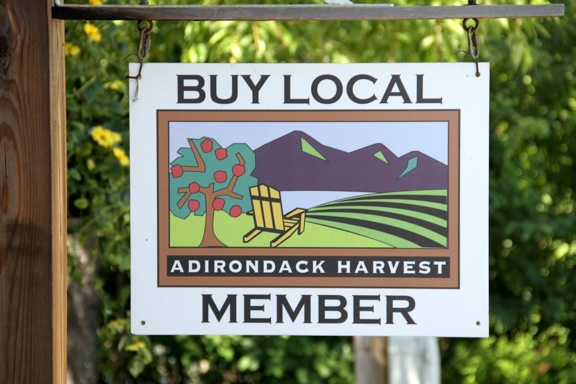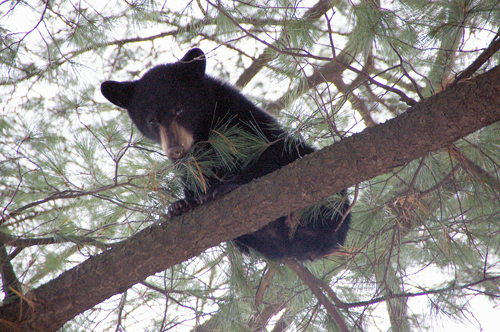SAVOR THE SEASON: Adirondacks are where the forest and farm meet

An Adirondack Harvest sign hangs at Green Goddess Natural Market in Lake Placid. (News photo — Andy Flynn)
If Wilmington’s tag line is “where the mountain and river meet,” then the tag line for the Adirondack Park could be “where the forest and farm meet,” agriculturally speaking.
Adirondack Harvest — a program of the Cornell Cooperative Extension of Essex County — held its annual Adirondack Harvest Festival at the county fairgrounds in Westport this past Saturday, and that seemed to be the perfect theme for the day: “Agroforestry & Forest Farming.”
This was a day to celebrate the harvest season. It was also an appropriate time to highlight our sense of place. After all, this is a park like no other. Inside its borders, the Adirondack Park includes communities scattered around a 6-million-acre footprint — about the size of Vermont. More than 40% of the land is owned by the state, and most of it is forested, including the High Peaks Wilderness and many waterways.
Yet the park is surrounded by the fertile farming country of the Mohawk River Valley to the south, Black River Valley to the west, St. Lawrence River Valley to the northwest, Adirondack frontier approaching Canada to the north and Champlain Valley to the east. Much of the land around the park’s border is farmland. Yet there is a rich heritage of farming inside the park.
The Adirondack Harvest Festival began with a Farm & Forest Hike with Champlain Area Trails. Many of the workshops focused on this juxtaposition of forest and farm with titles such as “Adirondack Tree Propagation,” “Bird-Friendly Maple” and “Wild Woodland Plants.”
Plus there was a demonstration of inoculating logs with shiitake mushroom spawn (cultured fungus). Growing shiitake mushrooms on freshly harvested tree parts — particularly sugar maple and beech trees — is becoming a popular way to incorporate the forest and farm together inside the Adirondack Park.
Kudos to Adirondack Harvest for focusing on this theme. Many people in the Adirondack Park live among the trees, away from traditional farmland. Once you get into the mountains, it’s sometimes inconceivable that farming would be a viable way to make a living in the 21st century.
Much of the early farmland inside the park has either been reclaimed by the forest or developed into housing. Averyville Road in Lake Placid is a perfect example. It used to be tough to find many trees along the road 100 years ago, but much of that once-thriving farmland is now gone.
Fields in the Lake Placid area have been cultivated since the 1800s, and some of them are still used to grow crops such as potatoes. Yet, as the farming generations retire or move away, it’s only natural for the forest to reclaim the open fields.
We now have a unique opportunity to combine the two. One example is having a maple sugar farm double as a shiitake mushroom farm. As competing beech trees are thinned out to strengthen the sugarbush, some of that wood can be repurposed into growing mushrooms. It’s a matter of getting creative with the land we have.
This is an exciting time for agriculture inside the Adirondack Park, particularly in Essex County. Many young families have moved to this region between Lake Champlain and the High Peaks over the past 20 years to take over old farms or build new ones. They’re raising families on farms. They’re creating jobs. They’re adding to an already-wonderful quality of life in this quiet section of the world. At a time when the family farm is vanishing from the American landscape, it is becoming a bigger part of the Adirondack landscape every year.
We encourage residents and visitors to support local agriculture. These new farmers can’t do it without you. While they are finding markets outside the region, they really need the locals to get behind them — either by attending farmers markets regularly, frequenting farm stands or enrolling in community-supported agriculture (CSA).



